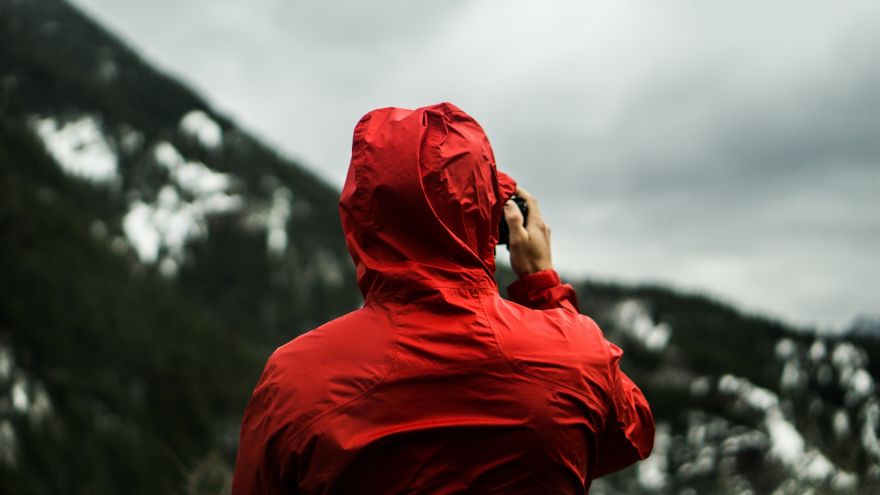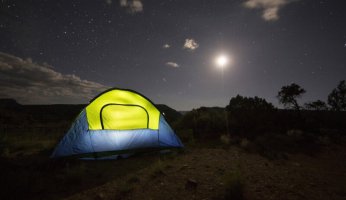The Differences Between DWR and Gore-Tex
 The Differences Between DWR and Gore-Tex
gearweare.net
The Differences Between DWR and Gore-Tex
gearweare.net
Staying dry is integral to comfort and warmth while adventuring in the outdoors. Nothing will ruin a trip as quickly as becoming sopping wet. More importantly, getting wet can be dangerous if the temperature begins to drop. Wet clothing robs you of body heat, and increases the chance of developing hypothermia. If it gets cold enough, wet clothes can also freeze, which compounds the danger.
The modern outdoor apparel industry has access the best technologies the world has ever seen for keeping you dry. Part of what makes these techniques so effective is that they allow the fabric to breathe. Sweat and condensation are released before they begin to make your jacket, boots, or gloves wet.
Table of Contents
The Differences Between These Two
The two ways that modern clothes are waterproofed is via a Durable Water Repellent (DWR) or the fabric. DWR is a coating that is applied to the outside of a piece of clothing, while waterproof fabric is exactly what it sounds like. Often these two technologies are used in conjuncture to create the greatest waterproof effect. Each type of product is produced by many different brands, but while all DWRs pretty much work the same, the way waterproof fabrics work varies widely. Gore-Tex is by far the most popular waterproof fabric technology. It also utilizes a common technique for water resistance, so for brevity’s sake, this article will be concentrating on that waterproof fabric.
As stated above, DWR is a coating that is added to the outside of a fabric. It works by increasing the contact angle between the water and the surface of the cloth. This causes the water to bead instead of spread, so that it more easily rolls off the garment. This is important because it stops that outer layer of cloth from becoming waterlogged. Without DWR water could more easily permeate the fibers of the cloth, which would leave you wearing heavier, chillier clothes. DWR does not interfere with the breathability of your apparel, since it is designed to adhere to the individual threads of the material. This leaves the small spaces in between fibers that are integral to the garments proper functioning.
The one major issue with DWR is that its effectiveness fades over time. When clothes get dirty or are rubbed repeatedly in the same place, the outer DWR coating can be eroded. Even if you are very careful with your apparel, years of use and washing are bound to cause the coating to lose its efficacy. To test if the DWR coating on your apparel is still working, pour a little water over them. If it beads up and easily rolls off, your good to go. If it spreads and begins to create dark spots, you should apply a new DWR coating to your clothes. DWR can be bought with spray on or wash in application. Common brands include Granger’s, Nikwax, McNett, and Penguin. Always clean your clothes before applying. Heating them is also recommended. Make sure to follow all washing and heating instructions for that piece of clothing. Also, make sure to carefully read and follow the application instructions for whichever DWR coating you choose.
How DWR Ratings Work
Some DWRs come with ratings. Typically, these rating included a percentage and a number of washes. The percentage represents the amount of cloth that remains dry after the clothing has been completely drenched. The higher this number is, the more effective to DWR is. The number of washes listed represents how many times you can wash this clothing with it maintaining the listed percentage dry. Again, the higher this number is the better.
How Gore-Tex Works
The technology that makes Gore-Tex waterproof is built into the very fabric. This material is made of three different materials. The outer layer is either softshell or hardshell fabric, that protects you from the most server elements. The inner layer is made from a similar material, however this layer is specifically designed to absorb water, moving it away from your body, and then through and out of your jacket. The middle layer is the most crucial for the proper functioning of Gore-Tex. It is a microporous Teflon material that is filled with tiny hole 1 millionth of a meter in size. These holes are just large enough to let water through in its gaseous form, but do not allow water droplets to penetrate. This works because molecules of water in the form of gas are much farther apart than those found in liquid water. This means that the sweat and condensation inside your jacket can get out, while the rain doesn’t stand a chance of getting in.
The Many Options Out There
The major downside to Gore-Tex is that is that it is very expensive. Apparel that gets its waterproof abilities just from DWR is much friendlier to one’s wallet. However, they won’t stand up as well to the test of time, losing their waterproof abilities much more quickly than clothes made with both technologies. If breathability is not important to you, there are other cheap and effective waterproof fabrics. These are great for sedentary activities outside, but will not work well for anything even mildly vigorous.
Mentioned above, Gore-Tex is not the only quality waterproof technology on the market. Polartec Neoshell, Mountain Hardware Dry Q. Elite, and Columbia Moni-Dry are some alternatives that are being utilized by those specific brands. What really sets Gore-Tex apart though is the ubiquity of this fabric. Gore-Tex is its own company, and is used in the clothing from over 80 brands, including very popular ones such as Patagonia, Arc’teryx, and Burton.
DWR and Gore-Tex (or similar fabrics) work best when used together. The technologies complement each other, with the thick waterproof material that Gore-Tex is made of simultaneously locking in insulation and warmth and offering breathability, and the outer DWR coating ensuring that any extra moisture moves quickly off your coat, giving it no chance of getting through. Neither is better or worse, but for the ultimate waterproof apparel, look for clothes that utilize both DWR and waterproof fabric.











